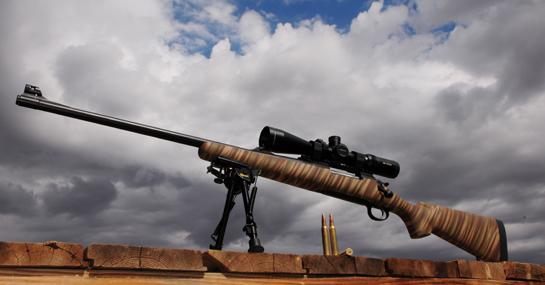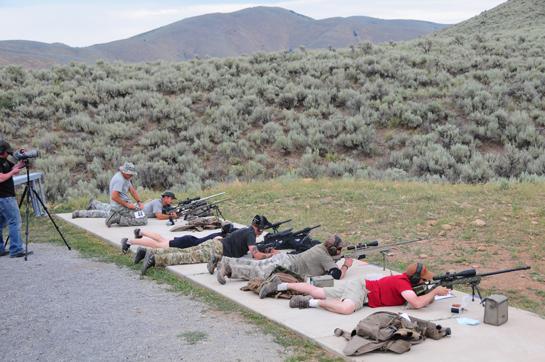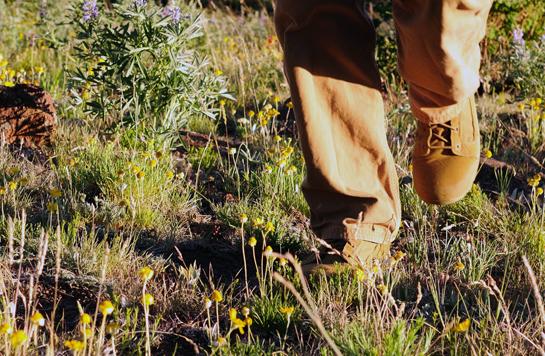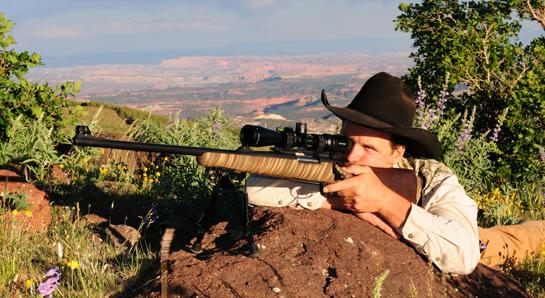We may earn revenue from the products available on this page and participate in affiliate programs. Learn More ›
I’ve got three Western hunts coming up this season – all in backcountry settings. All involve rugged terrain. Each can necessitate precision shooting. And every one includes the wild, on-the-edge adventure that outdoorsmen live for. Best of all, they are possible for everyone – including you – to pull off.
The first is a deep wilderness elk hunt on horseback. Dark-timbered slopes, 13,000 foot peaks, and the haunting bugle of a bull elk included.
Second comes the high desert mule deer hunt. Cool October mornings, the smell of crushed sagebrush, and the thrill of huge antlers on the horizon are par for this course.
The third is a hunt for the “grey ghost”. Otherwise known as coues deer. Remote desert ridges, tall cactus, and big distances are on the menu.
All three of these adventures are on my calendar – either for myself or to help out a friend – this fall. To get ready, I’ve signed up for a competition hosted by Vortex Optics …
Training for The Vortex Challenge
The Vortex Challenge is an event that focuses on two skills essential to the success of a western backcountry hunt:
1) Running (or hiking, if you’re out of shape like me).
2) Precision shooting
If a guy is in reasonable physical condition, the running/hiking part of the event – covering 7.5 miles of rough terrain – is not too bad. It will be good practice for the real thing this fall.
Total time during the event plays a part in your overall score, but it’s not significant. I should be able to complete the course comfortably in 3.5 hours, including time spent at the shooting stations.
The shooting, on the other hand, is a different story. Extreme distances coupled with rough, broken terrain and winds that blow right out of Hades are the norm. Shot distances extend to 1,200 yards. And while I personally would not shoot that far at an animal, (nor should almost any other hunter) proficiency at extreme range makes that 450-yard shot at a big muley buck much more doable. A superbly accurate rifle, a fine riflescope, and good shooting techniques are requisite.
Here are six keys to succeeding in the Vortex Challenge or a western backcountry hunt.
1) Rifle

I’ll carry a super accurate rifle configured around a Remington 700 action, including a 24-inch Hart barrel, lightweight composite stock by HS Precision, and an aftermarket Timney trigger. You don’t absolutely need a custom rifle for a backcountry hunt, but you do need a very accurate gun – think sub minute-of-angle – that fits you well and has a great trigger. Here are some good over-the-counter rifle choices that won’t break the bank. Remington 700 Long Range, Browning X-bolt Long Range hunter, and Savage 11/111 Long Range Hunter.
My rifle is chambered in .300 Winchester magnum. Such a powerhouse caliber is not necessary or even advisable for many hunters, especially those sensitive to recoil. But an accurate caliber that carries energy well at extreme distances is necessary. Some other great long-range calibers include the 6.5 X 284, the new hot-rod 26 Nosler, the .280 Ackley, and the 7mm Remington magnum.
2) Optic
Atop my rifle’s receiver I’ve mounted a steel scope base with 20 MOA (minutes of angle) built in. This enables me to dial more than 60 minutes of elevation into the Vortex Viper HS-T 4-16X44 scope that nestles securely in its precision matched rings.
On the 30 mm tube of the scope I installed a small bubble level – which will help me avoid canting the rifle during a high-pressure shot.
The scope is equipped with vortex’s VMR-1 reticle, which features subtension lines (hash marks) at two-minute intervals on both vertical and horizontal crosshairs.
Compensating for wind drift is always a real challenge when shooting at extreme distance. For instance, when shooting at 500 yards in a 20 mph crosswind, (common to much of the west) even the most wind-resistant of bullets will drift approximately 20 inches. That’s well out of the vital zone of a big bull elk, let alone a diminutive coues deer. The subtension lines on the reticle become your saving grace, allowing an accurate hold for wind drift.
Target turrets, zero-stop, and parallax adjustment round out the scope’s package nicely.
3) Ammo
My projectile of choice is Nosler’s new ABLR (accubond long range). The .30 caliber 190-grain hunting bullet has a BC (ballistic coefficient) of .640. That’s incredibly high, and means that the bullet is very aerodynamic and will maintain velocity and energy well at extreme ranges. It will also buck the wind very well. Nosler makes the ABLR bullets in component and cartridge form, and in a variety of calibers – all have astonishingly high BC.
I’ve handloaded my bullets to just kiss the lands when chambered. I’m getting 2,910 fps at the muzzle – the load boasts sub-moa accuracy and stays super-sonic (faster than speed of sound) to just over 2,000 yards. If the nut behind the bolt (that’s me) can do his part, the rifle and load are ready.
4) Shooting

I need to practice actually shooting long distances before the event. Sending a bullet toward a target up to 1,200 yards away is not something many of us do regularly. Having a good buddy to spot your hits for you is essential – there is a reason that military snipers always work with a spotter.
Reading the wind is the toughest part – especially in terrain where the wind may be calm at your shooting position, but pouring through a saddle in the ridge halfway to your target at 25 miles per hour. Your spotter should make the wind call for you, and then call your hit, allowing you to make any necessary adjustments for a hit on your next shot.
I’ll be honored to compete in the event with Wayne Van Zwoll (legendary outdoor writer and author) as my teammate. We’ll spend some time before the competition shooting together, learning to communicate clearly and work together smoothly before actually coming under pressure at the firing line. If you go on a western backcountry hunt, you should do the same with your hunting buddy or guide, before that buck or bull of your dreams stands in your crosshairs.
5) Footwear

Good footwear is my next biggest concern. I want a super comfortable, ultra lightweight boot that I can run in like a bat out of hell (hey, I can still fantasize even though I’m pushing 40). I need a boot that will keep my feet safe and in good condition too.
Danner’s Tachyon fits the bill perfectly. It’s an ultra-lightweight tactical boot that tips the scales at just 26 ounces. Sporting a true rubber outsole and a speed lacing system, the boot is a marvel of modern footwear engineering. I’ve been running and hiking in them regularly and they feel great. I believe they will be ideal for any early season hunt in a dry environment.
6) Conditioning
I’ve been running a bit in the evenings – just enough to get a cardio workout. My day-to-day lifestyle as a rancher and hunter keeps me pretty well conditioned but I still gasp for air like a lizard dipped in cold water when I have to run. So I’m trying to improve my cardio. I make a point to wear the Tachyon boots when training – during a competition or important hunt is not the time to break in your footwear.
Tip – if you live lower than 3,500 feet elevation see how far you can run without stopping to rest. That’s approximately the same distance you will be able to walk without stopping to rest at 8,000 feet and higher. You don’t need to be a marathon runner to successfully enjoy a western hunt – but executing a dedicated physical conditioning plan before your hunt is important. Get your quads – the ones God gave you – ready.
Main thing is – if you’ve always dreamed of a backcountry western hunt, featuring tall peaks, clear mountain streams, big antlers and even bigger adventures, go. Save the money, do the work, and have the experience.
Check out the Vortex Extreme event yourself. Come and test your mettle if you like. I’ll be reporting my success (or lack thereof) in a future post here on Outdoor Life.
